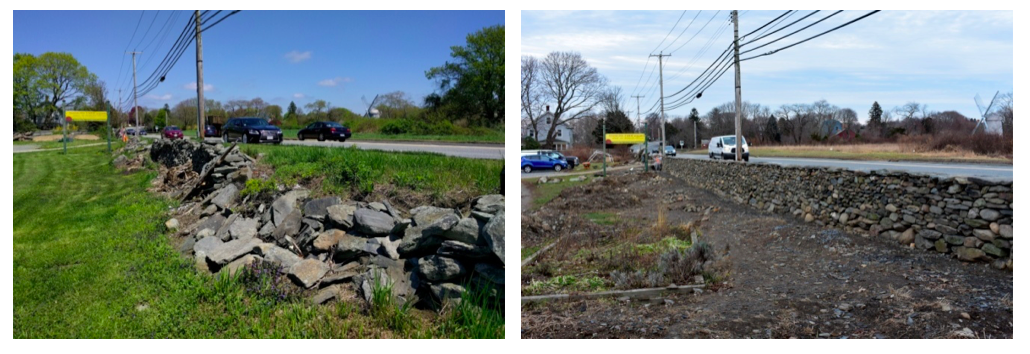by Leigh Schoberth
Stone walls are tangible links to the past. The extensive network of stone walls throughout New England is a visible reminder of the region’s eighteenth and nineteenth century agricultural practices. Stone walls, sometimes interchangeably referred to as “stone fences” were constructed as property boundaries and barriers for livestock. These walls transformed the abundance of stone uncovered during the spring plow into something functional.
Over time many of New England’s stone walls have fallen subject to disrepair, vegetation overgrowth, and have been lost to development. The threat of incremental loss jeopardizes the future of this iconic landscape feature. In an effort to mitigate this loss, The Preservation Society of Newport County and Preserve Rhode Island launched the Aquidneck Stone Wall Initiative (www.AquidneckStoneWalls.org) with generous funding from the van Beuren Charitable Foundation. The initiative’s current efforts are focused on the three historically agricultural communities—Newport, Middletown, and Portsmouth—that make up Aquidneck Island.

To test this community-oriented preservation initiative, this collaborative effort has focused on repairs at two pilot sites with the hope of expanding the program in the future. Like stone walls, the pilot sites have a significant connection to the Island’s agricultural history. In December 2018, the first project was completed at Aquidneck Island’s oldest continuously operating farm, Simmons Farm in Middletown, Rhode Island. Repeated regradings of the road and the close proximity of trees led to collapsed portions of the 211-foot wall.
Work at the second site will begin in the spring of 2019 at the Norman Bird Sanctuary, a well-preserved example of an island farm dating to the eighteenth century with nineteenth century additions. Its buildings and land holdings represent the history of the site and ownership as it transitioned from an eighteenth century owner-operated farm to a nineteenth century gentlemen’s farm and summer residence.
While the focus of this initiative is the preservation of Aquidneck Island’s stone walls, our efforts have taken on another dimension: promoting the craft of dry-laid stone walls itself. The restored stone walls are constructed in the same manner as they were centuries before using the dry-laid method. Dry-laid walls do not use mortar but instead rely on stone placement, friction and gravity to keep them standing. By choosing to work with Robert Faraone, a Rhode Island-based stone mason certified by the Dry Stone Conservancy in Kentucky and The Stone Trust in Vermont, we are not only ensuring the longevity of these walls but also promoting this important craft.
